Home / Albums / Tag Middle Ages 304

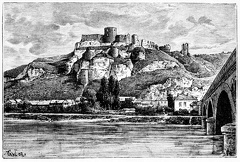 Ruins of Gaillard castle
Ruins of Gaillard castle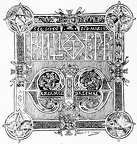 Ornate page from the Evangéliaire de Saint-Vaast
Ornate page from the Evangéliaire de Saint-Vaast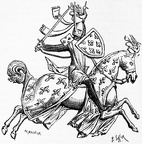 Philippe de Valois, after his seal
Philippe de Valois, after his seal Philippe le Bold, son of Saint Louis, after his tombstone
Philippe le Bold, son of Saint Louis, after his tombstone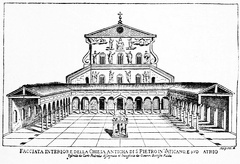 Interior facade of the old St. Peter's Church in the Vatican
Interior facade of the old St. Peter's Church in the Vatican Knight of around 1220, from the Villard de Honnecour album
Knight of around 1220, from the Villard de Honnecour album La Ziza, palace of the Norman and Swabian kings of Sicily, near Palermo
La Ziza, palace of the Norman and Swabian kings of Sicily, near Palermo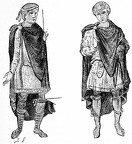 Germanic costume (5th-8th century)
Germanic costume (5th-8th century)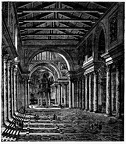 Former Constantinian Basilica of Saint Peter. Restitution
Former Constantinian Basilica of Saint Peter. Restitution Gautier Bardins, bailiff and adviser to the king in the 13th century, according to his tombstone
Gautier Bardins, bailiff and adviser to the king in the 13th century, according to his tombstone Geoffroy Plantagenet
Geoffroy Plantagenet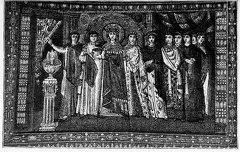 Empress Theodora
Empress Theodora Enamelled copper stock. The Annunciation. Limoges, 13th century
Enamelled copper stock. The Annunciation. Limoges, 13th century Enamelled copper vase by G. Alpaïs de Limoges
Enamelled copper vase by G. Alpaïs de Limoges Emperor Lothaire
Emperor Lothaire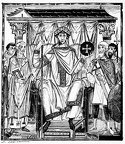 Emperor Otton III, after a miniature from the Evangelist of Bamberg
Emperor Otton III, after a miniature from the Evangelist of Bamberg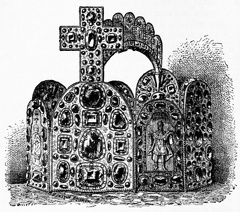 Crown of Charlemagne, kept in the imperial treasury of Vienna
Crown of Charlemagne, kept in the imperial treasury of Vienna Emperor Anastasius in consular costume
Emperor Anastasius in consular costume Emperor Justinian and his court - Mosaic of San Vitale, in Ravenna
Emperor Justinian and his court - Mosaic of San Vitale, in Ravenna Anglo-Norman knight, after a tomb from 1277
Anglo-Norman knight, after a tomb from 1277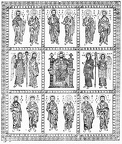 Byzantine enamels from the Limburg reliquary
Byzantine enamels from the Limburg reliquary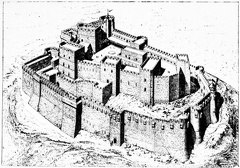 An attempt to restore the Krak, according to M. Rey
An attempt to restore the Krak, according to M. Rey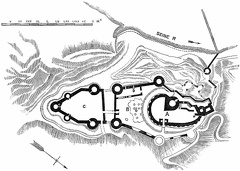 Château-Gaillard, Plan
Château-Gaillard, Plan Cardiff Castle, Glamorgan
Cardiff Castle, Glamorgan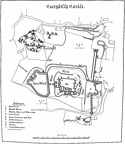 Caerphilly Castle, Ground plan
Caerphilly Castle, Ground plan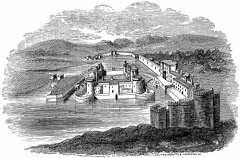 Caerphilly Castle
Caerphilly Castle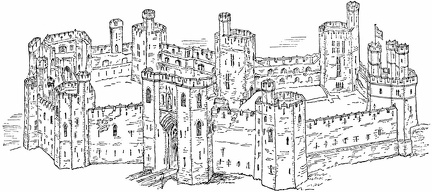 Caernarvon Castle, Bird’s-eye View
Caernarvon Castle, Bird’s-eye View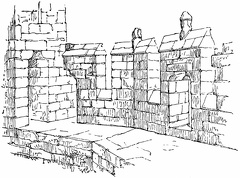 Caernarvon Castle, Battlements
Caernarvon Castle, Battlements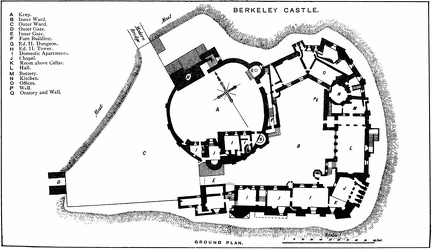 Berkeley Castle, Plan
Berkeley Castle, Plan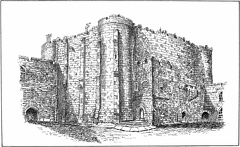 Berkeley Castle, Keep
Berkeley Castle, Keep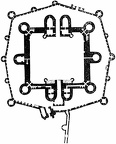 Beaumaris Castle, Ground Plan
Beaumaris Castle, Ground Plan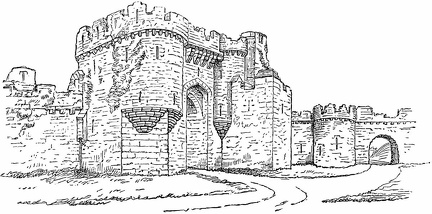 Beaumaris Castle, Entrance
Beaumaris Castle, Entrance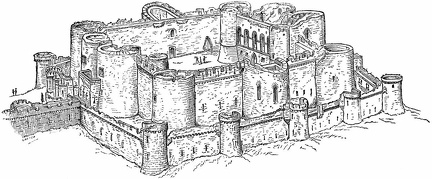 Beaumaris Castle, Bird's Eye View
Beaumaris Castle, Bird's Eye View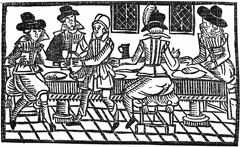 Alehouse
Alehouse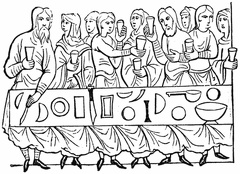 Health-Drinking
Health-Drinking Cakes and Ale.
Cakes and Ale.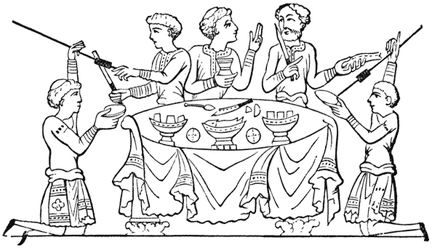 Anglo-Saxons Feasting and Health-Drinking
Anglo-Saxons Feasting and Health-Drinking Charlemagne
Charlemagne The Lords and Barons prove their Nobility by hanging their Banners and exposing their Coats-of-arms at the Windows of the Lodge of the Heralds
The Lords and Barons prove their Nobility by hanging their Banners and exposing their Coats-of-arms at the Windows of the Lodge of the Heralds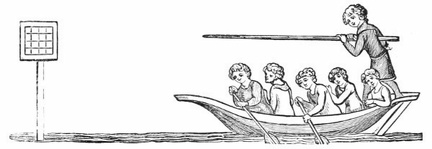 The Water Quintain—XIV. Century
The Water Quintain—XIV. Century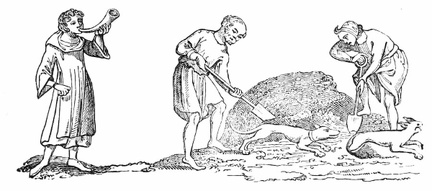 The Unearthing of a Fox
The Unearthing of a Fox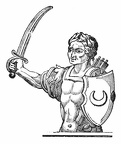 The Saracen Quintain
The Saracen Quintain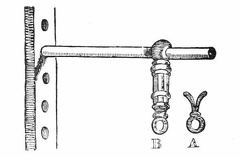 The Ring in Tilting
The Ring in Tilting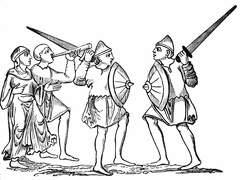 Sword-Dance
Sword-Dance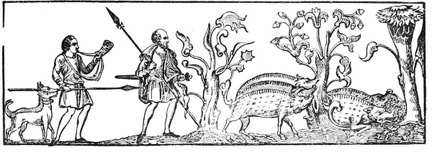 Swine Hunting - IX Century
Swine Hunting - IX Century Stilt Dancing.—XIII. Century
Stilt Dancing.—XIII. Century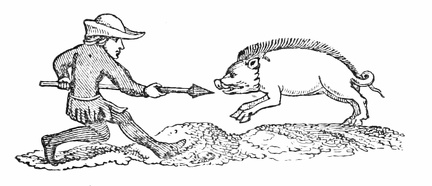 Spearing a Boar—XIV. Century
Spearing a Boar—XIV. Century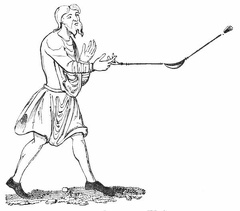 Slinging—VIII. Century
Slinging—VIII. Century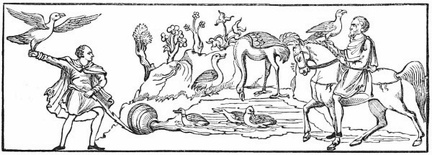 Saxon Hawking—IX. Century.
Saxon Hawking—IX. Century. Remarkable Dance.—XIII. Century
Remarkable Dance.—XIII. Century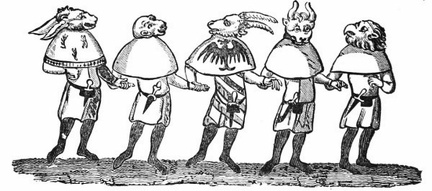 Mummers—XIV. Century
Mummers—XIV. Century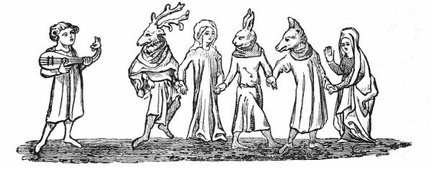 Mummers.—XIV. Century
Mummers.—XIV. Century Moveable Quintain—XIV. Century
Moveable Quintain—XIV. Century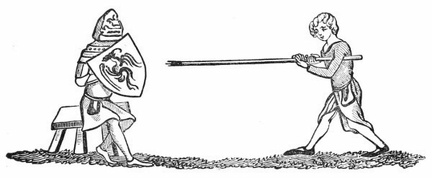 Living Quintain—XIV. Century
Living Quintain—XIV. Century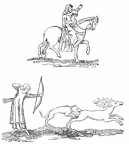 Ladies Hunting—XIV. Century
Ladies Hunting—XIV. Century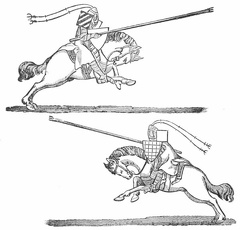 Justing.—XIV. Century
Justing.—XIV. Century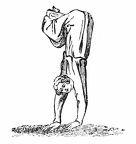 Herodias Tumbling
Herodias Tumbling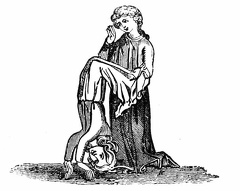 Herodias Tumbling with her Servant
Herodias Tumbling with her Servant Hawking—XIV. Century
Hawking—XIV. Century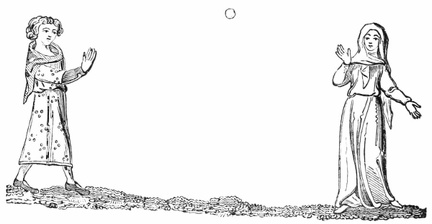 Hand-Ball.—XIV. Century
Hand-Ball.—XIV. Century



